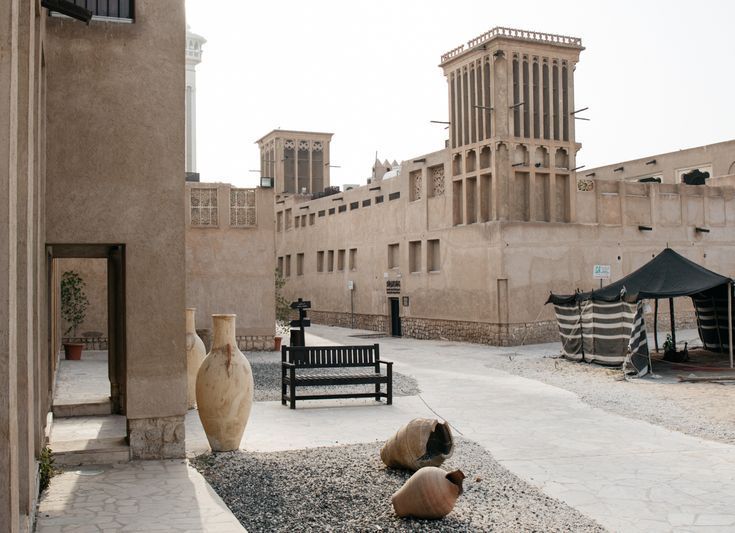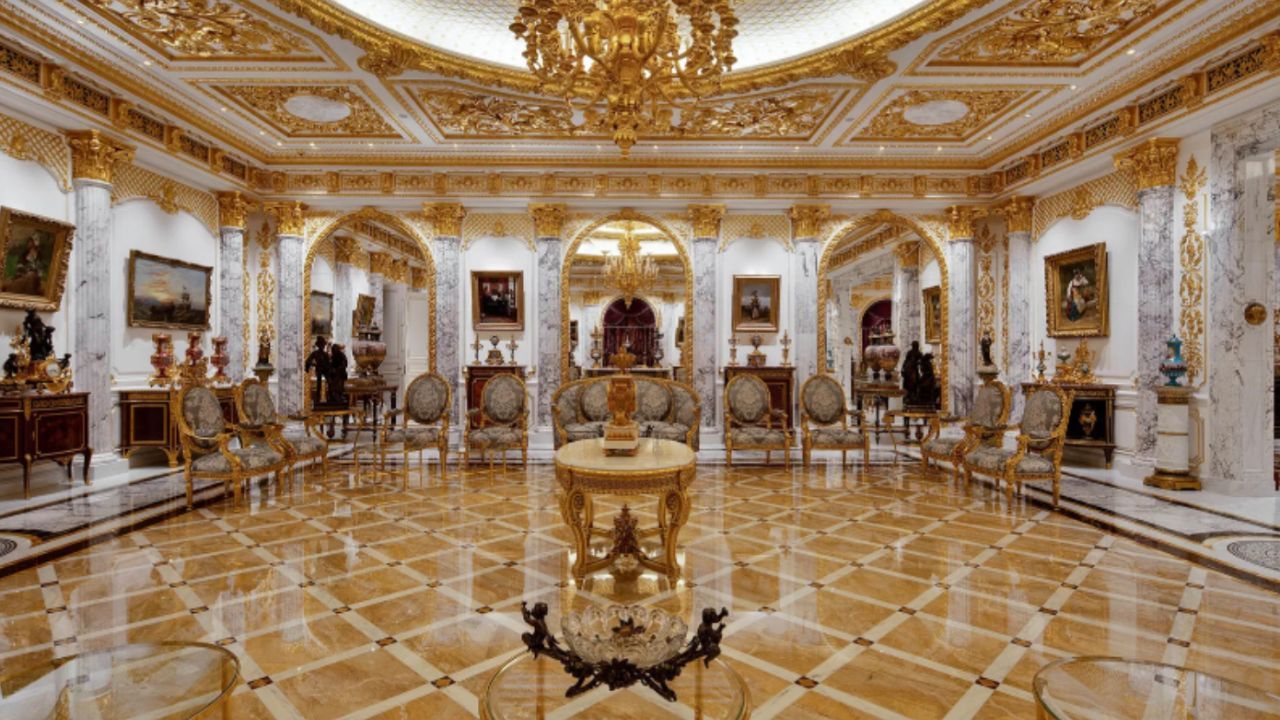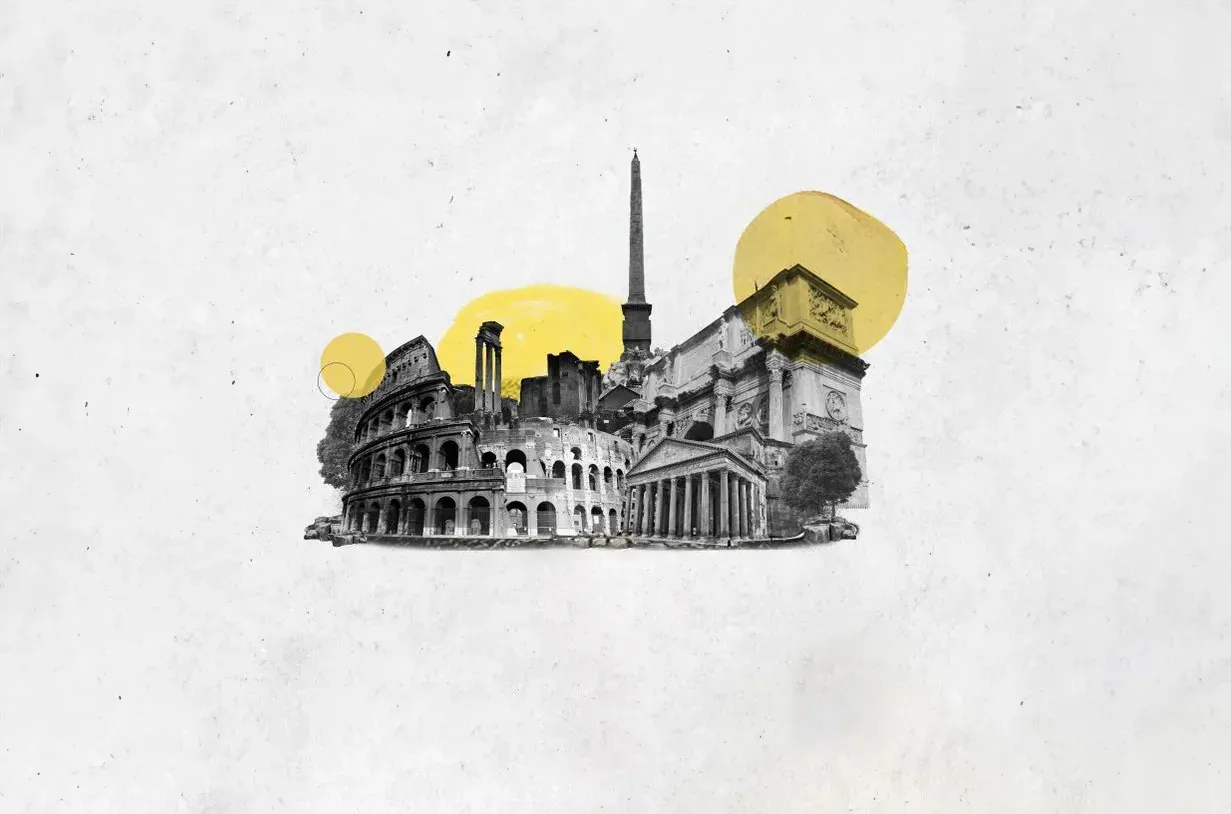Sie möchten eine Immobilie kaufen oder verkaufen?
971 50 947 2404info@qicrealty.com

Al Seef Street, Dubai: Eine Mischung aus Tradition und Moderne
Jährliche Veranstaltungen in Dubai: Das ganze Jahr über ein Fest
Neue Grundgehaltsanforderung für Goldenes Visum: Expertenmeinung
Ist das Leben in Dubai oder in der Türkei besser?

8. Februar 2025
Dubai has, once again, seen a record transaction in the luxury real estate market. There is a large Marble Palace at Emirates Hills for which AED 425 million has been given as the deal amount, securing the second spot in the expensive residential property list of Dubai. This high-end transaction has caught the headlines-not only in real estate but it also points towards the thriving luxe housing market in the city. According to Property Monitor, this grand palace, inspired by the Palace of Versailles in France, now ranks as the second most expensive residential transaction in Dubai, following the sale of the Como Residences penthouse in Palm Jumeirah in 2023. Initially listed for AED 750 million, the Marble Palace is located in one of Dubai’s most exclusive gated communities, Emirates Hills. The massive estate spans 60,000 square feet of interior space on a 70,000-square-foot plot.

8. Februar 2025
The Dubai office market has seen an unprecedented surge in demand with a shortage of supply in 2024, leading to a steep rise in rental prices. This upward trend is also expected to continue into 2025. According to reports, the shortage of office space in Dubai is projected to persist until 2027-2028. The DIFC would comprise approximately a third of the supply in new offices that could be added over the next three years in this city. In any case, most of it is likely to be let even before completion. Occupancy and Rental Growth: Key Market Statistics With one of the highest in the world, the present occupancy in Dubai is 92% of office stock and is likely to be higher than 94% at the end of 2025. Office rents surged 22% year-on-year in 2024 in Dubai and are forecasted to surge further by an additional 10%-12% in 2025 on account of new business entrants’ emergence and foreign companies coming because Dubai solidifies its position among key financial, commercial, and tourist centers.

30. Januar 2025
Interiors are more than just residential spaces; they mirror the lifestyle, values, and dreams of those living within them. While minimalist interiors focus on functionality and simplicity, prioritizing clean lines and essential elements, luxury ones often venture into a world of abundance and elegance. But what exactly defines luxury in interiors? Is it the richness of materials, the intricate details, or perhaps exclusive custom craftsmanship? In Dubai’s vibrant real estate market, luxury interior design has evolved into an art form, merging rich historical influences with cutting-edge innovation. From classic styles rooted in centuries of architectural history to modern interpretations that embrace grandeur, each design choice contributes to a unique narrative. This article delves into what defines luxury design, the symbolism and philosophy it carries, and how these luxurious styles are harmoniously integrated into Dubai’s iconic skyscrapers and lavish interiors. We also spotlight some of the leading design firms that have crafted some of the stunning interiors . Philosophy Behind Opulent Design Luxury design extends beyond aesthetics—it shapes lifestyle, fosters a sense of well-being, and reflects a person’s values, identity, and aspirations. Rooted in ancient times, luxury interiors encompass various styles, each carrying its unique symbolism and influence. Opulent interiors don’t have a single definition, nor are they always about excessive ornamentation or rooms dripping in gold. Luxury is a multi-faceted concept that flows in different directions, shaped by cultural backgrounds, regional influences, and personal preferences. While opulence might mean rich embellishments in one context, in another, it could signify elegance through simplicity, using high-quality materials and thoughtful design choices. Luxury design, therefore, encompasses a spectrum—from lavish, decorative styles to refined, understated elegance. Interiors play an essential role in creating spaces that are visually and emotionally uplifting. They also communicate messages and unfold stories that reflect their residents’ beliefs and ambitions. For example, in Ancient Rome, wealthy citizens designed interiors to embody strength and stability, with grandiose elements like marble columns, mosaics, and statues that symbolized power and triumph. Historically, the boundaries between interior and exterior design were far less distinct than they are today. In fact, the look of the interior was often considered an extension of the building’s facade, and the two were seen as synonymous. This philosophy stemmed from the idea that interiors should maintain a harmonious relationship with the exterior, inheriting its architectural language and overall aesthetic. The close connection between interiors and exteriors in the past has led to the variety of interior styles we see today. As architecture evolved over the centuries, so did interior design, creating a rich legacy that still influences modern luxury. Over time, the traditional "rule" of matching interiors to exteriors had faded away, allowing for more creative freedom and diverse design approaches. Timeline of Luxury Design To fully understand the philosophy of luxury design, it’s essential to explore its foundational styles. Most of these are no longer widely practiced, and few can fully recreate them today, as modern materials and societal needs have transformed significantly. Even so, these historical styles serve as the basis for today’s contemporary luxury designs, inspiring new interpretations that honor tradition while embracing innovation. Ancient Roman Architecture (509 BCE – 476 CE) Ancient Roman architecture adopted elements from Greek styles, such as arches, vaults, and domes. Although Greek styles may also appear luxurious, they conveyed a different message—one of balance and harmony, emphasizing a restrained elegance, which was not associated with luxury at the time. In contrast, Roman design was a clear display of wealth and power, often showcasing treasures and military victories through lavish architectural elements. Triumphal arches, for example, had detailed carvings and bas-reliefs that depicted scenes of combat achievements and symbols of glory. Inside private noble residences, mosaics and frescoes also portrayed military campaigns, mythological heroes, or gods associated with victory. These elements were not just decorative; they were powerful statements of strength, designed to reflect the stature and accomplishments of the homeowners. In imperial palaces, such as Nero’s Domus Aurea (Golden House), interiors featured statues of emperors, symbolizing both the ruler’s authority and Rome’s military might. These elements worked together to create an environment that impressed visitors and reinforced the power of Rome through every architectural detail.

30. Januar 2025
When you think of Dubai, towering skyscrapers and luxury malls might be the first things that come to mind. But step away from the busy streets, there is a side of the city that's a world apart—a landscape of serene lakes, vibrant gardens, and wildlife sanctuaries. These nature parks aren't just patches of green; they're vital spaces that offer a breath of fresh air and a chance to create unforgettable memories. On top of that, parks and reserves play a crucial role in preserving the environment and providing a sanctuary for both people and wildlife. Here, you can connect with others, discover various flora and fauna, and most importantly, feel like a part of this extraordinary world. In this guide, we'll take you on a journey to discover these stunning spots. We'll share all the details you need to plan for your visit and make the most of what each park has to offer. So, get ready to Relax, Explore, Reconnect, and dive into Dubai’s best natural treasures.

16. Januar 2025
Golf combines luxury, innovation, and the thrill of sport in one of the world's most dynamic cities. Once a desert outpost, Dubai has rapidly transformed into a golfer's paradise, attracting enthusiasts from around the globe to its world-class courses. Golf in Dubai is more than just a game—it’s an experience marked by elegance and competition. Each golf course is a testament to architectural brilliance and opulent design, providing not only a place to play but also a perfect venue to indulge in unparalleled amenities and services. The fusion of cutting-edge technology with traditional elements of the game creates a unique golfing environment that is both challenging and immensely rewarding. In this article, we'll explore why golfing is a beloved pastime for many and delve into the factors that contribute to its soaring popularity in Dubai. We'll take you on a journey through some of the city's most renowned golf courses, uncovering the signature experiences they offer. From state-of-the-art clubhouses and gourmet dining to golf-academies and recreational activities, we'll highlight the various amenities that make each course a destination in its own right. Why Golfing is So Popular in Dubai Ideal Climate for Golf Dubai’s warm and sunny climate is one of the key reasons for the city's appeal as a golfing hotspot. With minimal rainfall, golfers can enjoy playing almost every day of the year. This year-round playability makes Dubai a particularly attractive destination for international players looking to escape colder climates during the winter months. Beyond daytime golfing, Dubai provides opportunities with night golf options. In particular, many courses have floodlights, enabling golfers to enjoy rounds late into the evening. This feature is particularly attractive during the hot summer months, when playing during the day can be more difficult due to high temperatures. This flexibility ensures that players can enjoy their rounds in cooler, more comfortable conditions, while also experiencing the stunning sight of Dubai’s illuminated skyline. Economic Investment and Tourism Dubai’s government has strategically invested in sports infrastructure, recognizing golf’s potential to enhance tourism and the local economy. By developing top-tier courses and facilities, Dubai has firmly positioned itself as a global golfing hub. The city hosts prestigious international tournaments, such as the DP World Tour Championship, attracting some of the world’s best golfers and a global audience. Furthermore, tourism from these events boosts business for hotels, restaurants, and other local industries. Accessibility and Inclusivity Another reason for golf’s popularity in Dubai is its accessibility for players of all levels. Many courses offer programs for beginners, such as coaching clinics, golf academies, and introductory packages that make the sport more approachable for those new to the game. The presence of highly experienced coaches and top-tier training facilities further encourages newcomers to pick up the sport. Dubai’s cultural diversity also plays a role in the sport’s popularity. As a cosmopolitan city with residents and visitors from all corners of the globe, Dubai’s golf courses attract players from a wide range of backgrounds. This diversity creates a vibrant community of golfers and fosters a welcoming atmosphere where individuals from different cultures can bond over their shared passion for the game. Top Golf Courses in Dubai Emirates Golf Club Background: Founded in 1988, Emirates Golf Club proudly stands as the first grass golf course in the Middle East, becoming a key pillar of Dubai's golfing community. Designed to international standards, the club quickly gained a reputation as one of the region’s finest. Over the years, it has attracted golf enthusiasts from around the world, establishing itself as a premier destination for both local and international players. Signature Courses Majlis Course : The Majlis Course, created by the renowned architect Karl Litten, is the crown jewel of Emirates Golf Club. This internationally acclaimed championship course has hosted numerous high-profile tournaments, including the Hero Dubai Desert Classic. Players of all levels appreciate the blend of desert landscape and lush fairways, making every round on the Majlis Course both scenic and thrilling.

16. Januar 2025
What security do you have as a property buyer in Dubai? When buying a property in Dubai, you enjoy various security options. For one, Dubai is known for its solid legal and business infrastructure. There are clear property rights and a transparent legal system that ensures protection for property owners. In addition, real estate developers in Dubai are obliged to offer a warranty period for their projects, which provides buyers with additional security. In addition, there are various government institutions, such as the Dubai Land Department (DLD), which monitors compliance with building codes and quality assurance standards. When buying an apartment in Dubai, you will also receive a land register entry, which guarantees you security and legal rights to the property. The Dubai Land Department (DLD) is the competent authority responsible for registering real estate transactions and maintaining the land registry. Land registry registration confirms your ownership status and protects your rights as a property owner. You can rest assured that your investment in Dubai is legally secure.

16. Januar 2025
Real estate buyers report on their experience: When it comes to buying an apartment in Dubai, positive experiences are crucial. At Stadelmann Exclusive, as a leading real estate agency, we offer you comprehensive expertise and first-class support to make your apartment purchase in Dubai a smooth and enjoyable experience. Find out first-hand why our clients are enthusiastic about their experience with us and why we are the first choice for anyone looking to buy an apartment in Dubai. Trust in Stadelmann Exclusive to make your dream of buying an apartment in Dubai come true. Contact us today and let's make your apartment purchase in Dubai a success together. But don't just take our word for it – read on to find out what our happy customers have to say about their experience with us.

16. Januar 2025
When choosing destinations for relocation or investment, it is necessary to have a clear system of priorities and possess basic criteria for identifying profitable locations. In this article, we have selected several cases and suggested studying the behavior of the richest people in the world. After all, if they were able to earn fortunes, then they know something, and if they have information, why not share it? Growth of tourism and influx of wealthy residents Dubai regularly ranks among the most attractive cities in the world. According to Euromonitor International, a global research company, the metropolis is the leader in tourist and excursion flow – 16.8 million people. In December 2023, hotels in Dubai reached a record occupancy rate, significantly impacting their revenues. According to CoStar Group, the average daily room rate (ADR) for the month was the highest on record. In 2023, 4,500 millionaires moved to the United Arab Emirates, according to a study by Henley & Partners, as the country has earned the status of a haven for wealthy individuals from around the world. In the capital migration ranking, the UAE ranked second after Australia (5,200 millionaires). “High-net-worth-individual migration statistics speak volumes. Affluent families are extremely mobile, and their transnational movements can provide an early warning signal in terms of a country’s economic outlook and future country trends. Like the proverbial canary in the coal mine, they alert us to dangers that may lie ahead as they are more sensitive to potential threats to their wealth and usually have the resources to take a corrective course of action to preserve their legacies.” — Dr. Juerg Steffen — CEO of Henley & Partners — the world leader in the study of capital migration. Many factors that attract millionaires to the UAE: • Security: a key factor, especially in unstable times, which is why so much private capital flows into the UAE. Dubai offers a reliable regulatory environment: the country respects the rule of law and guarantees economic freedom. • Taxes: Dubai boasts some of the most competitive tax rates in the world, making it an attractive place to do business and reside. • High-quality medical care: the UAE is known for its high quality of medical services, which attracts many international patients. • Entertainment and luxury: the UAE offers a wide range of entertainment — from luxury shopping malls and restaurants to premium and business class real estate and communities. • Education: over 200 international schools in the UAE offer high-quality education for the children of millionaires. • Year-round resort: the UAE is famous for its beaches, water parks and marinas, providing recreational opportunities throughout the year. For investors Despite the perception that Dubai has grown on oil revenues, the city's main sources of income are tourism and real estate. UBS analysts, as part of the UBS Global Real Estate Bubble report, have rated the Dubai real estate market as "not overvalued", its real value is significantly higher than the current market value – the city is protected from the real estate bubble. An index exceeding one point indicates the threat of a bubble in the market. If the value of this index approaches 1.5 points, this means that a collapse may occur in the near future. In this case, prices and demand for real estate will begin to decline, which may lead to losses for investors.

16. Januar 2025
Finance is one of the most vital parts of any economy. This is especially true for economies that are growing quickly. One example of such an economy is the UAE. The UAE saw around 3.5% GDP growth between 2010 and 2023. The country overcame the challenging years of the COVID-19 epidemic, posting a remarkable 7.4% growth in 2022 with a nominal GDP of $507 bln. By the end of 2022, the combined assets of the top 10 UAE domestic banks had surpassed the country's GDP, amounting to $898.89 bln.

16. Januar 2025
Over the past fifty years, the architectural landscape of the United Arab Emirates has undergone a dramatic transformation. From its early days of modest Bedouin structures, traditional wind towers, and small commercial hubs, UAE has evolved into a metropolis known for its towering skyscrapers, cutting-edge designs, and expansive suburban developments. This swift metamorphosis, particularly notable from the late 1980s onward, raises a compelling question: how did the UAE become one of the most distinctive technological hubs in the Arab East? Dubai’s Cultural Heritage – Ancient Structures and Barajeels Dubai's ancient architecture was influenced by the Antiquity period, which featured arches, domes, aqueducts, and amphitheatres. They were not only aesthetically pleasing but also highly functional. Arches and domes, for instance, allowed for the creation of large, open interior spaces, while aqueducts demonstrated advanced engineering capabilities for water transport. Al Ahmadiya School, established in 1912, showcases traditional Emirati architecture with its use of courtyards, wind towers, and decorative arches, blending functional design with historical aesthetics.
Entdecken Sie das Insiderwissen unserer Makler zum Thema Immobilien in Dubai: Expertenanalysen und ausführliche Informationen zur Stadt und ihrem Immobilienmarkt.
Experteneinblicke in den Immobilienbereich
Vielen Dank für Ihre Kontaktaufnahme. Wir werden uns so schnell wie möglich bei Ihnen melden.
Hoppla, beim Senden Ihrer Nachricht ist ein Fehler aufgetreten. Bitte versuchen Sie es später noch einmal
SPEISEKARTE
KONTAKT
971 50 947 2404
info@qicrealty.com
Westburry-Turm,
Business Bay, Dubai
Vereinigte Arabische Emirate
NEWSLETTER
Abonnieren Sie unseren Newsletter und erhalten Sie exklusive Einblicke
Abonniere den Newsletter
Vielen Dank für Ihre Kontaktaufnahme. Wir werden uns so schnell wie möglich bei Ihnen melden.
Hoppla, beim Senden Ihrer Nachricht ist ein Fehler aufgetreten. Bitte versuchen Sie es später noch einmal

UNTERNEHMEN
Wir vereinen die Interessen von Investoren, ausgewählte Immobilien, ein tatkräftiges Team, Innovationen und Ästhetik an einem Ort. Als führendes Ziel der Region für den Kauf und Verkauf von Luxusimmobilien bedienen wir die Gegend seit vielen Jahren mit Stolz.
QIC REALTY ©2025 Alle Rechte vorbehalten












